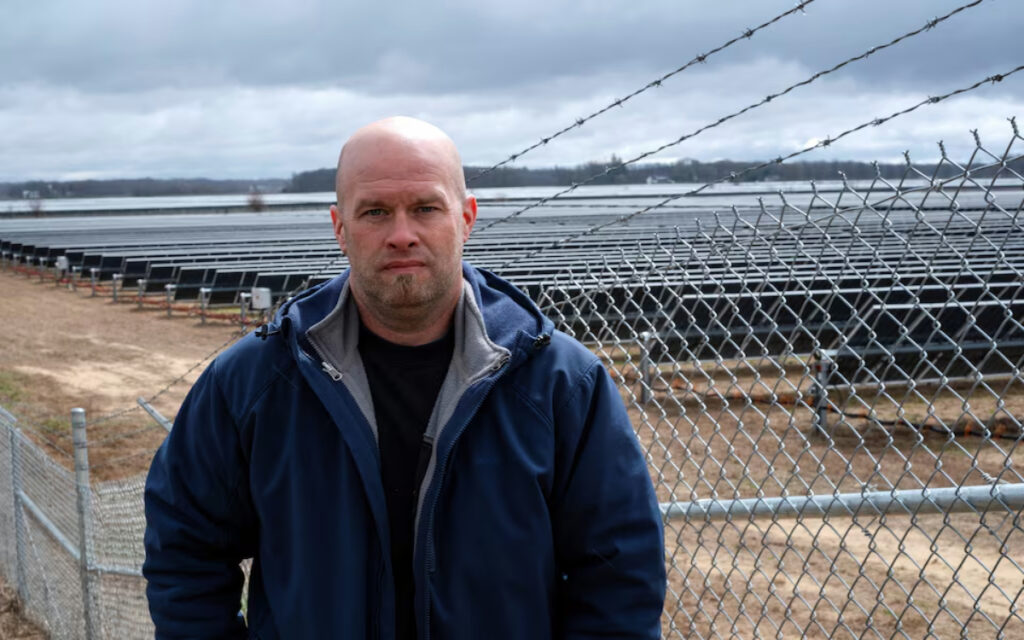When Dave Duttlinger gazed up at the sky above his Indiana farm and saw a thick band of yellowish-brown dust, his initial reaction was one of frustration and concern. He had foreseen this very scenario unfolding.
Situated near Wheatfield, Indiana, approximately 445 acres of Duttlinger’s fields are now adorned with solar panels and associated equipment. In April 2019, he leased this land to Dunns Bridge Solar LLC for what would become one of the Midwest’s largest solar developments.
On a blustery spring afternoon in 2022, Duttlinger’s phone began ringing incessantly with inquiries from perplexed neighbors. Dust from his farm had infiltrated their trucks and even made its way inside their homes. They demanded answers and solutions to rectify the situation.

Duttlinger’s solar lease, scrutinized by the international news Agency Reuters, revealed Dunns Bridge’s commitment to minimizing damage to crops and farmland during construction activities. However, despite these assurances, subcontractors undertook grading activities on Duttlinger’s fields to facilitate road construction and the installation of panels, disregarding his warnings about potential erosion risks.
The result was a landscape transformed, with fine sand now covering vast swathes of fertile topsoil beneath the solar panels. During Reuters’ visits to the farm last year and this spring, it was evident that vegetation struggled to grow in these areas.
Also Read | Paris 2024 Olympics Flame Embarks on Final Leg as Three-Masted Ship Sets Sail for France
Expressing his dismay, Duttlinger lamented, “I’ll never be able to grow anything on that field again.” Approximately one-third of his 1,200-acre farm, where his family cultivates corn, soybeans, and alfalfa for cattle, has been leased out.
The Dunns Bridge Solar project, a subsidiary of NextEra Energy Resources LLC, the world’s largest producer of renewable energy from wind and solar, is at the center of this controversy. Duttlinger approached NextEra regarding the damage to his land, only to be informed that any remedial work would be reviewed at the conclusion of the contract in 2073, as per the agreement terms.
When approached for comment, NextEra declined to respond to inquiries regarding Duttlinger’s situation or any future commitments made to him. Project developer Orion Renewable Energy Group LLC redirected questions to NextEra.



